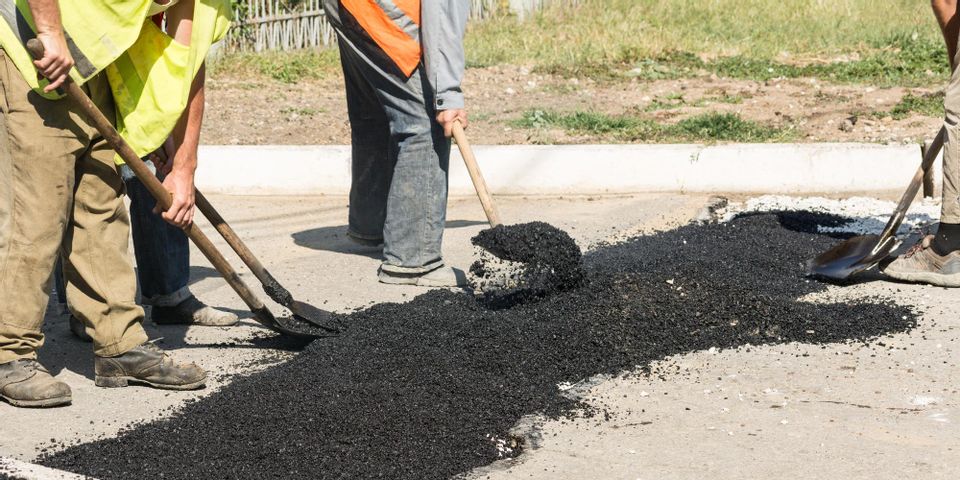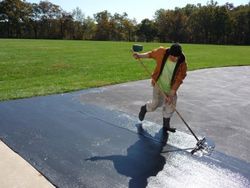The Difference Between Asphalt Crack Filling & Seal Coating

With the wear and tear endured by asphalt surfaces, cracks and damage occur over time. Both crack filling and seal coating are used to extend the life of driveways and parking lots. Understanding the differences between the two solutions — and considering variables like the type and size of the cracks — will help you find the most cost-effective and durable method for your circumstances. Here’s what you need to know.
A Guide to Crack Filling vs. Seal Coating
Crack Filling
The method of crack filling consists of adding extra asphalt to the surface and patching over irregularities, such as fissures or potholes. Filling cracks with additional asphalt stops the growth of the cracks and prevents more from forming. It’s best to block the gaps, holes, and other flaws to halt the damage while they are still small. Once they become too deep or wide, it might be wiser to repave the entire area.
Seal Coating
Seal coating, on the other hand, can’t be used to fill cracks or potholes. This method does not replace missing asphalt from roads or parking lots. Instead, seal coating is a preventative measure used to create a protective barrier over the old layer of asphalt. The added coat defends against elements such as water, oil, and UV damage, slowing deterioration and prolonging the life of the surface. Seal coating can also fix tiny imperfections. Overall, this method helps to enhance the appearance of the asphalt and keep it in top condition for longer.
For crack filling or seal coating on your damaged asphalt surfaces, contact Lazer Perfect Striping & Sealing in Nixa, MO. Their licensed and professional team has 48 years of combined experience as residential and commercial paving contractors for the Branson Tri-Lakes area. Contact the locally owned company by calling (417) 887-6604 or visit their website to learn more about their services and request a free estimate.
About the Business
Have a question? Ask the experts!
Send your question

